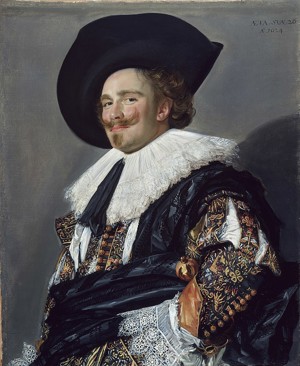Cavalier

Laughing Cavalier by Frans Hals (1624). Note that this painting pre-dates the usage of “cavalier” in 1642 in reference the supporters of Charles I, so the assumed attitude of this subject might just be coincidental.
In its strictest definition, this simply means “horseman” or “horse soldier,” from the same root and etymology as “cavalry.”
However, it has a cultural definition as a knight or upper class man – often one who escorts a woman to a social event.
It also has a negative image of someone who disregards rules or norms – a “cavalier attitude.” This comes from its usage to describe the supporters of Charles I. The following is from a petition in 1642.
Several sorts of malignant Men, who were about the King; some whereof, under the name of Cavaliers, without having respect to the Laws of the Land, or any fear either of God or Man, were ready to commit all manner of Outrage and Violence.
From the text, it would appear their attitude toward “the Laws of the Land” was “cavalier.”
The 1911 Encyclopedia Brittanica states:
It was soon adopted (as a title of honour) by the king’s party, who in return applied Roundhead to their opponents…
To these men, to be “cavalier” was to oppose the existing government, which they counted as a point of pride.
Why I Looked It Up
I had always wondered.
Back in the 1980s, the Dungeons and Dragons cartoon had a character that was a cavalier, but I had never heard of it before (I played D&D considerably – I don’t remember this being a character class in the versions I played). Notably, the cavalier in the cartoon did not have a horse.
Then, in the later 1980s, Chevrolet made a ubiquitous car it named the Cavalier. And I had known of the usage of the term to describe someone who was callous or flippant (I believe my mother had used to term to describe me at various points…)
I just didn’t know where the term came from, or how it got its various meanings.
Update
Added on
A friend who played D&D quite a bit mentioned this:
Cavalier was a class from Unearthed Arcana in first edition. Same with the Acrobat. You are right, they were not part of the original game.